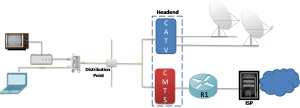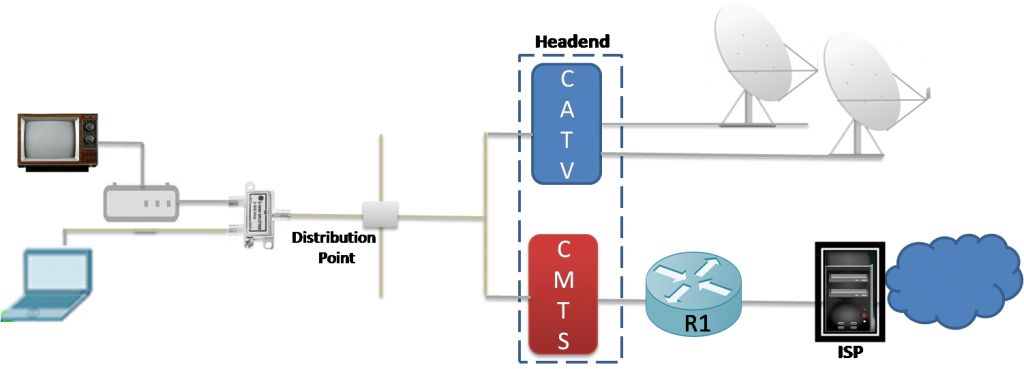Cable Internet
Network and Internet Access through Cable TV is a type of broadband internet access that uses the resources of the television cable system. It provides network edge connectivity from the internet service provider (ISP) to an end-user of the internet services in the same way as DSL and fibre to the home (FTTH) provides. Cable internet requires a cable modem at the customer’s side and a cable modem termination system at a cable operator premises known as the headend. Both are connected using a coaxial cable or a Hybrid Fiber Coaxial cable. The headend is connected to the switching Centre using high bandwidth fibre trunk, which is used for long haul connections.
A user connects a computer and router or switches to the cable modem. Cable modem translates the digital signals into the broadband frequencies used for transmitting on the local cable TV office, contains the computer system and databases, known as CMTS. The maximum downstream data rates can be as high as 1 Gbps, while upstream data rates ranges are from 384 Kbps to more than 20 Mbps. One downstream channel can handle hundreds of cable modems. With the system grows, the Cable Modem Termination System can be upgraded with more downstream and upstream ports. Cable Internet is a low cast internet system for home users.

